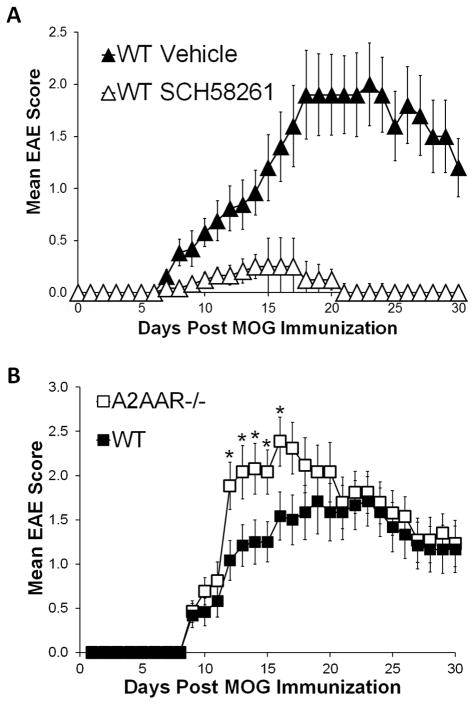Figure 1. A2AAR antagonism protects against EAE while A2AAR−/− mice are susceptible to EAE.
(A) EAE was induced in wild type mice that were given SCH58261 A2AAR antagonist (open triangles, n=12) or vehicle (closed triangles, n=13) treatment, disease activity was monitored daily and the mean EAE score was calculated. The results shown are from 3 separate experiments. Error bars represent the standard error of the mean. (B) EAE was induced in wild type (closed squares, n=12) and A2AAR−/− mice (open squares, n=13), disease activity was monitored daily and the mean EAE score was calculated. The results shown are representative of 2 separate experiments. Error bars represent the standard error of the mean. Statistically different mean EAE scores at each time point are indicated (*, p ≤ 0.05).

